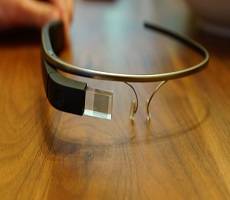November 8, 2013
Time to refresh BYOD policies, as Smartglasses get set to improve workplace efficiency
Employers may soon need to add wearable computers to the list of BYOD in the office. According to analysts Gardner, over the next five years, corporate adoption of Smartglasses such as Google Glass will rise to ten per cent. Although of particular relevance for companies with offsite workers, such as field service personnel and inspectors, some of the basic functions of smartglasses could help bring added efficiency across the workplace. Their widespread adoption depends heavily on the apps and services being developed, but, the analysts say, apps will emerge that do specific tasks with smartglasses, which may cause organisations to provide them for a wider range of employees, while many other workers will simply wear their personal smartglasses at work.
“Smartglasses with augmented reality (AR) and head-mounted cameras can increase the efficiency of technicians, engineers and other workers in field service, maintenance, healthcare and manufacturing roles,” said Angela McIntyre, research director at Gartner. “In the next three to five years, the industry that is likely to experience the greatest benefit from smartglasses is field service, potentially increasing profits by $1 billion annually. The greatest savings in field service will come from diagnosing and fixing problems more quickly and without needing to bring additional experts to remote sites.”
Gartner also expects some of the basic functions of smartglasses to help bring added efficiency across the enterprise. How-to instructions and illustrations on the smartglass displays enable workers to perform tasks even if they do not remember all the procedures. The virtual assistant on the smartglasses could serve as an interactive, hands-free “how-to” manual.
“IT organizations are already being asked to make recommendations about whether smartglasses should be used in the workplace based on benefits and risks perspective, as well as policy and implementation,” said Ms. McIntyre.
“Now is the time for IT organizations to refresh their bring-your-own-device (BYOD) policies with smartglasses in mind. Though IT organizations will provide smartglasses to employees who regularly wear them for their job task, much of the IT impact may come from employees wearing their personal smartglasses at work.”
Additional information is available in the report “Innovation Insight: Smartglasses Bring Innovation to Workplace Efficiency.”
The impact of technology on the workplace is one of the key points of discussion at Worktech 13, which will be held at the British Museum in London on the 19th and 20th November.














Virgin Atlantic is first airline to apply Google Glass to customer service
February 14, 2014 @ 12:33 pm
[…] already been predicted that Smart Glasses will be a boon to technicians, engineers and healthcare workers, as well as […]